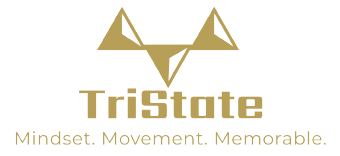Breaking Down the Olympic Lifts: Teaching Progressions for Coaches
One of the most common questions I get is, “Where do you start when teaching the Olympic lifts?” The real answer is: it depends. I don’t believe in cookie-cutter starting points. I believe in meeting the athlete where they are. If someone comes in with a powerlifting background, they’re going to need something different than a 13-year-old just starting out. Coaching is about adjusting, not templating. That’s where progress—and trust—starts.
There’s no single “right way” to teach the Olympic lifts. There are frameworks, yes. But the best coaches learn to listen, assess, and build progressions based on who’s in front of them. If you teach only from your system and not from your athlete’s foundation, you’ll miss opportunities to help them succeed early—and success early is how you get buy-in and momentum.
Where I Start Depends on Where They Start
If a youth athlete walks in, I’m looking for basic movement confidence—can they jump? Can they land? Do they understand tension? We’ll build from there. If someone comes in from CrossFit, they probably already have barbell experience—so we start with refining what they know, not rebuilding it from scratch. The key is simple: don’t assume. Start with a conversation, and let their background guide your approach.
My Go-To Teaching Progressions
Top-down teaching: I often start with power or high hang positions and gradually work down to the floor. This gives athletes a chance to feel success in smaller, focused pieces of the lift.
Hang progressions for both lifts: High hang snatches and cleans are my default starting point. They build explosive movement and teach bar-body connection without overwhelming the athlete.
Pause dip push presses for the jerk: Before we even think about splitting, I want athletes to feel their dip position and overhead drive with confidence.
Supplemental drills:
Romanian deadlifts for hinge awareness
Jerk dips for rhythm and balance
Overhead squats or zombie squats to prep for positional strength
It’s not about doing everything, it’s about doing the right things at the right time.
The Mistake New Coaches Make
Too many new coaches rush to full lifts. They want to see the end product so badly that they shortcut the process. But this isn’t about what we want as coaches—it’s about what the athlete needs to feel successful.
Sometimes that means simplifying the lift. Other times, it means scaling weight or complexity. And sometimes, it just means waiting.
“You’re not coaching movement—you’re coaching people. Learn who they are before you decide how they should lift.”
Adapting to the Athlete’s Goals
If someone’s here for general fitness or CrossFit, we might move through progressions a little faster. They want to lift for power, conditioning, and performance in other settings—so we tailor things accordingly.
But if someone comes in wanting to compete in weightlifting, we slow it way down. I’ve got an athlete now with an incredible strength base from another sport. But instead of fast-tracking him into full lifts, we’re rebuilding his movement from the ground up—because he wants to be great in this sport, not just good at lifting heavy weight.
Good coaching starts with listening. Take the time to understand the athlete’s history, their goals, and how they learn. Don’t chase speed—chase trust. Athletes will move better, and they’ll buy into the process if they feel like you’re building it with them, not forcing it at them.
This week, ask every athlete or client: “What’s your background?” Then re-evaluate how you’re progressing them.
